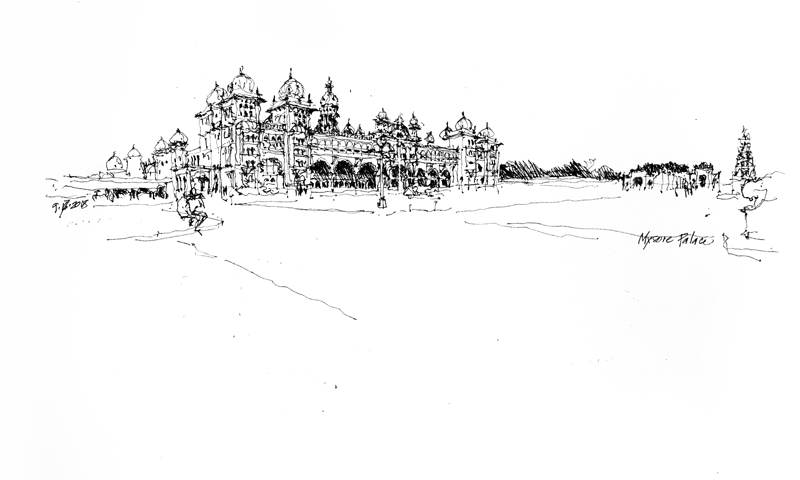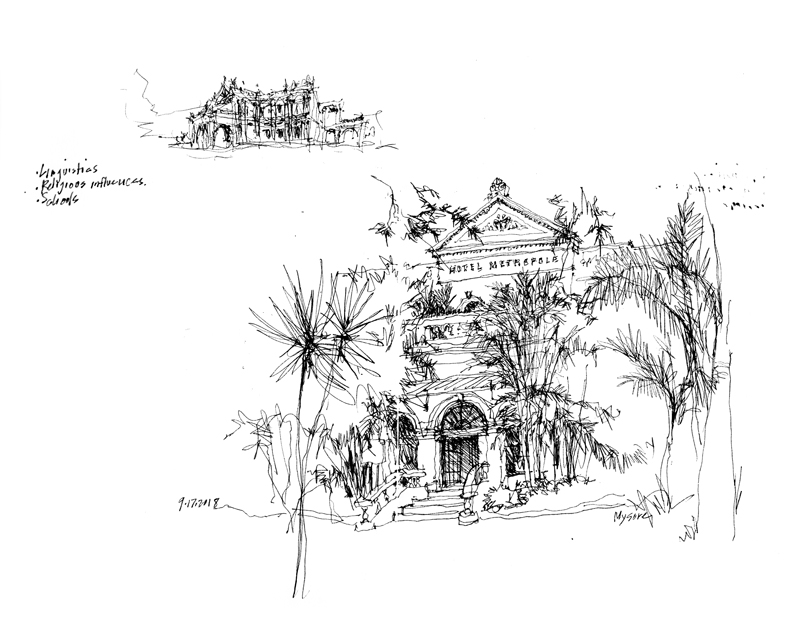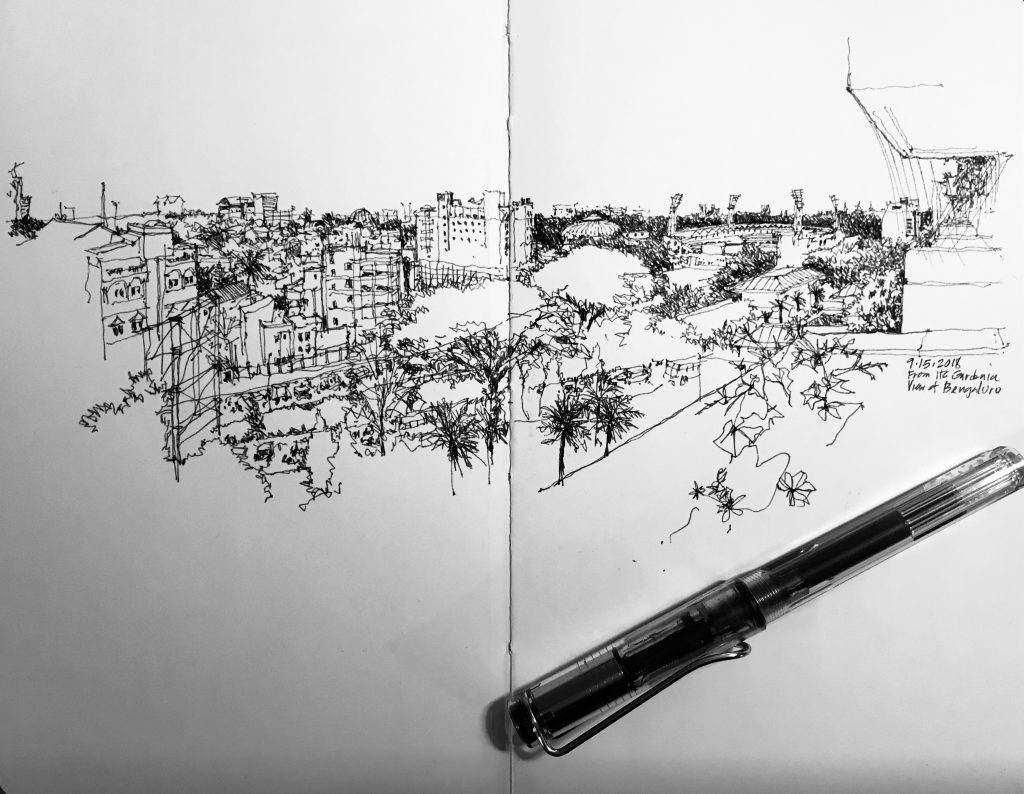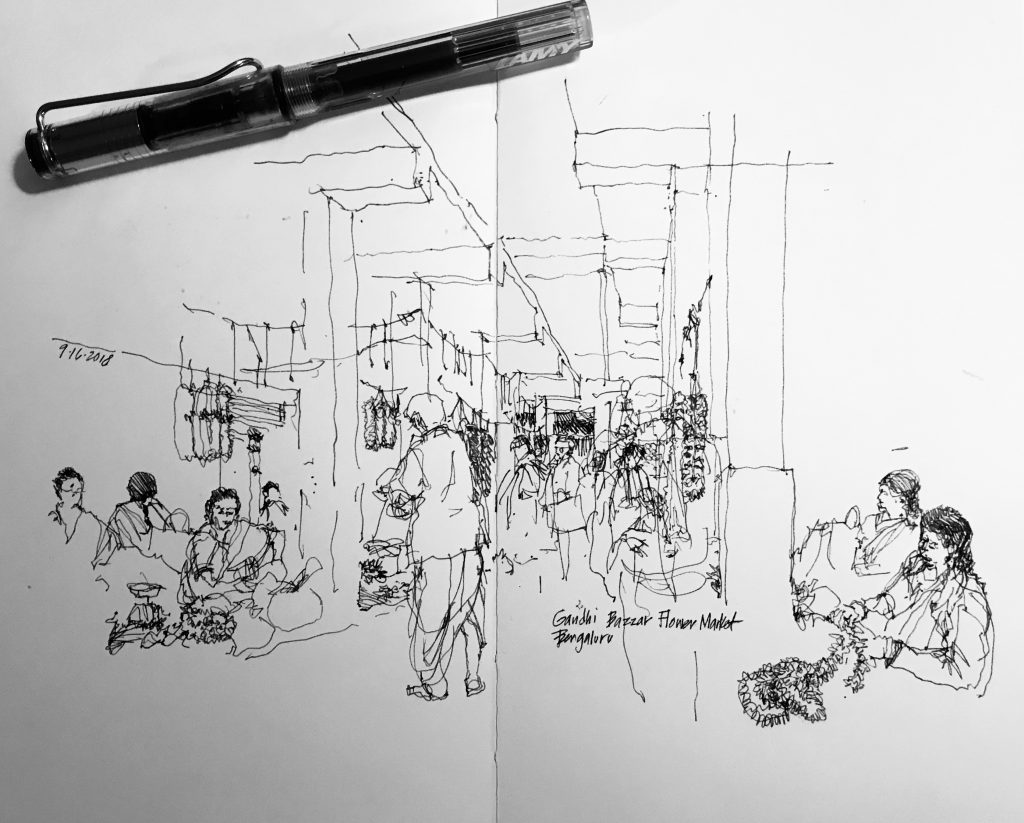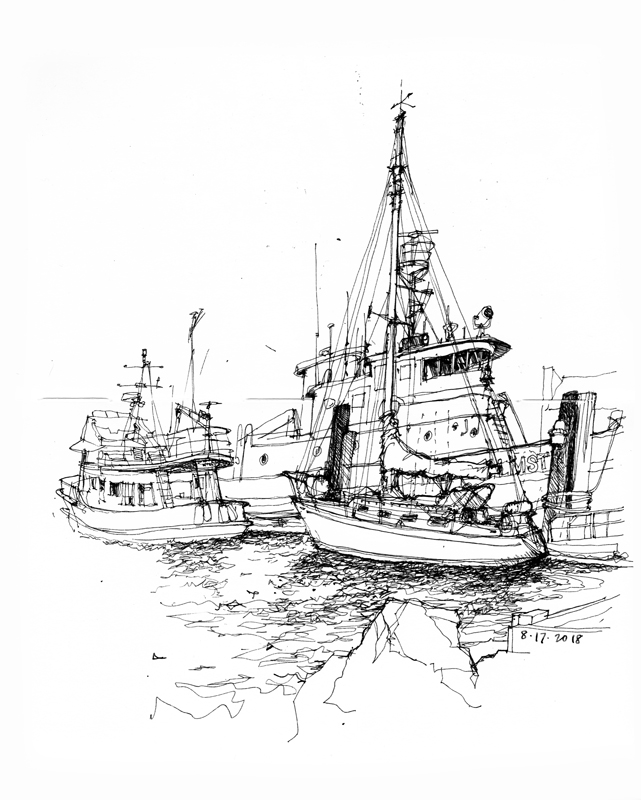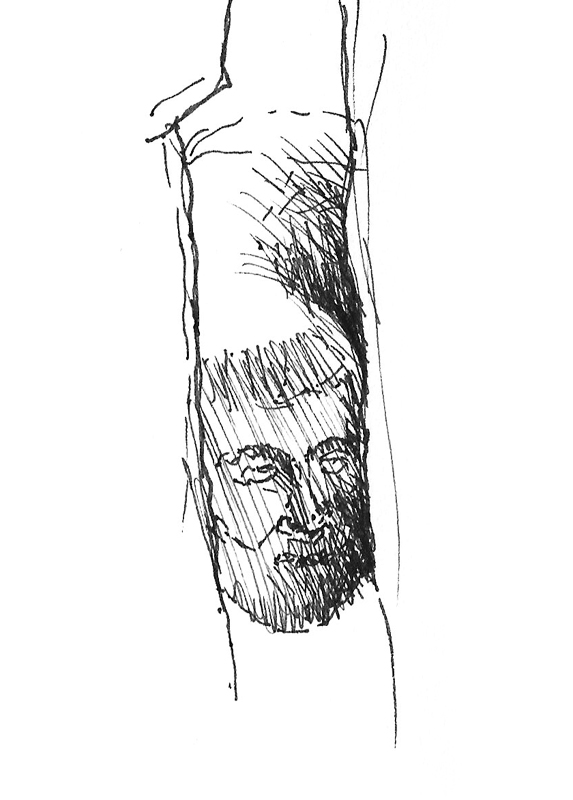From Bengaluru, we drove to Mysore, where I met with faculty and students at the Wadiyar Centre for Architecture and toured Mysore Palace. The above is a 25-minute sketch of Mysore Palace I managed to do before leaving on the 5-hour drive to Calicut.
The residence of the Wadiyar Dynasty, the first palace dates from the 14th century and was built within the confines of the puragiri or citadel of Mysore. Over the centuries, the palace was rebuilt several times. The existing Indo-Saracenic structure, designed by the British architect Lord Henry Irwin, was constructed between 1897 and 1912, after the previous structure was extensively damaged during a fire in 1896.
Below is the entrance to the Royal Orchid Metropole where I had spent the night. This was originally built to serve as a residence for British guests of the Maharaja of Mysore.

